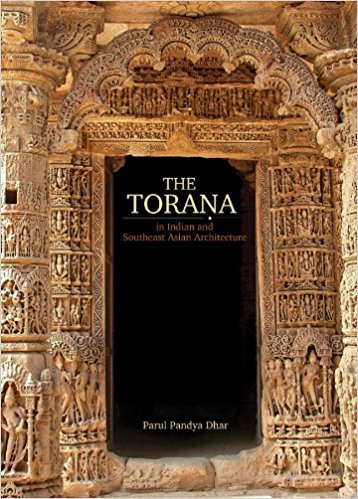This is a succinct monograph on the morphology of the architectural motif of the torana, or the festooned or simply arched portal, that is a fundamental constituent, endlessly repeated in the history of Indian architecture. Lavishly illustrated and printed on heavy art-paper renders it a fairly weighty tome, no doubt one that scholars of South Asian architectural history would welcome. Although toranas are entrances or gateways, they are not to be confused with Pratolis and Gopuras, which grew into more substantial buildings, sometimes as defensive gatehouses to guard. Gopuras being more substantial buildings, have already been the focus of previous studies (one of the more notable ones of South Indian ones being the 1963 monograph by J.C. Harle). The study is essentially two-pronged. Establishing a formal morphological corpus or shall we say a taxonomy of the torana and second, ballasting this with what ancient texts and inscriptional evidence have to say about the form.
This study is thus within a well-established indological methodology, which as Professor Settar’s Foreword makes clear has been followed ever since the earliest writings on Indian art and architecture from the nineteenth century.

